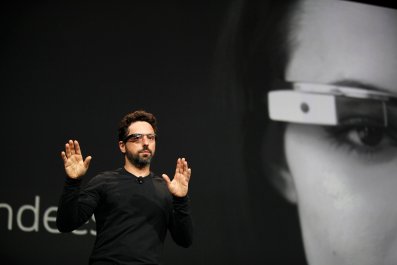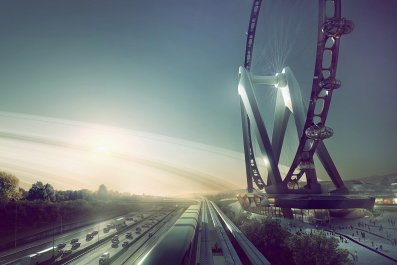Most drivers who see a warning that they must merge because their lane is going to end typically react in one of two ways: Courteous operators will slow down and change lanes immediately, while others will speed up, merging at the last possible point, leaving others with a case of road rage.
Turns out that speeding up is the right thing to do. The maneuver is called zipper merging, and it works because it utilizes all of the available real estate on the road. In some European countries, like Austria and Germany, zipper merging is required by law, but many (okay, some) American drivers are too nice to do it. A zipper merger trial in Minnesota failed because drivers were merging too soon and not staying in the lane that would eventually close. They were trying to be polite.
In an illuminating YouTube video, journalist Tom Vanderbilt, author of the book Traffic: Why We Drive the Way We Do (and What It Says About Us), explained the wonders of zipper merging and other counter-instinctual driving techniques that would make highways safer and more efficient.
Speaking at the Boing Boing: Ingenuity conference in San Francisco in August, Vanderbilt also showed why SUV drivers are less safe than they believe. While SUV owners may think they can see more of the road, this elevated viewpoint can be misleading. "For anyone driving an SUV or a taller vehicle, you'll be getting less feedback from the road," Vanderbilt says, "and you'll feel like you're going slower than you really are." The road is filled with optical illusions. For example, people take chances with oncoming trains because it's hard to accurately determine a vehicle's speed when it's coming from far away.
As for bicyclists, putting on a helmet has surprising and unwanted consequences. While bike helmets are often touted as an absolute safety necessity, some have questioned whether they actually make things safer. Vanderbilt references the research of Ian Walker, a psychologist at the University of Bath, in England, pointing out that motorists tend to drive closer to bikers when they are wearing helmets. Walker, a bike enthusiast, dressed in a variety of outfits and then recorded the movements of drivers with a set of ultrasonic sensors as they passed by him. Helmets attracted drivers to him but, surprisingly, putting on a woman's wig and clothing actually kept the cars farther away.
And we have nobody but ourselves to blame for traffic jams. Drivers are bad at keeping their vehicles at a constant speed. Vanderbilt showed a video from a study in which people were asked to drive at a constant, slow pace around a circular race track. The result? They couldn't do it without traffic piling up.
There are two big fixes for all this bad driving. Vanderbilt is convinced that "smart" cars, like Google's self-driving cars, will eliminate most traffic headaches, as they can perform feats like checking their own blind spot while at the same time determining if they are in someone else's.
The other solution is fewer drivers, and while this might seem obvious, a small reduction could have a big impact. An innovative traffic study in Boston found that if just "one percent of drivers from carefully selected neighborhoods" had their excursions canceled, it would "reduce the extra travel time for all other drivers in a metropolitan area by as much as 18 percent."
In other words, the most courteous drivers might be the ones who just stay home.























